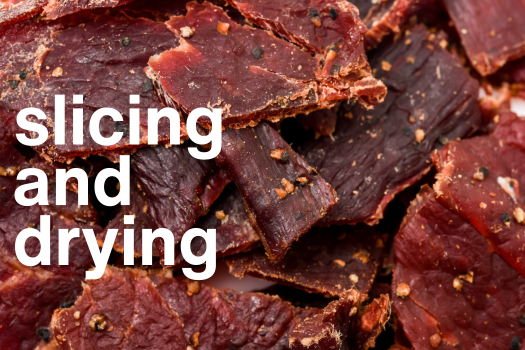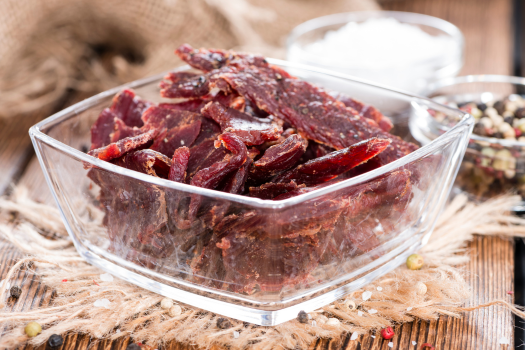Beef jerky, the delectable dried and seasoned meat snack, has garnered immense popularity over the years as a go-to choice for individuals seeking a protein-packed and flavorful treat. However, with its rising demand, many consumers often find themselves wondering why beef jerky comes with a higher price tag compared to other snacks. In this article, we will explore the factors contributing to the intriguing question: “Why is beef jerky so expensive?”
Quality of Ingredients
One of the primary reasons why beef jerky commands a higher price is the superior quality of ingredients used in its production.
Premium beef cuts are a cornerstone of high-quality jerky. Producers often opt for lean cuts of beef, such as sirloin, flank, or round, to minimize the fat content and achieve a more concentrated flavor. Lean meat ensures that the jerky is not overly greasy and allows the seasoning and spices to shine through, providing a rich and savory taste.
The process of sourcing high-quality beef comes with its own set of expenses. It involves careful selection, inspection, and adherence to strict quality standards to ensure the end product is safe and delicious. Additionally, factors like seasonality and market fluctuations can affect the availability and cost of premium beef cuts, further influencing the price of beef jerky.
When consumers choose beef jerky, they are not just paying for any meat-based snack; they are investing in the taste and quality that comes from using the finest ingredients available.
21 Reasons why is beef jerky so expensive
1. Preparation and production costs

Creating beef jerky is a time-consuming and labor-intensive process, which contributes significantly to its higher price point. The complex steps involved in preparing and producing jerky require precision and expertise to achieve the desired texture, flavor, and shelf life.
2. Marinating and seasoning
Before the drying process begins, the meat undergoes marinating and seasoning to infuse it with a burst of flavors. Producers carefully craft unique marinades using a blend of herbs, spices, and other seasonings, allowing the flavors to penetrate the meat thoroughly. This step ensures that every bite of beef jerky delivers a delightful taste experience.
3. Slicing and drying

Once marinated, the meat is meticulously sliced into thin strips, often by hand, to ensure consistent thickness and texture.
The drying process, traditionally done in special dehydrators or ovens, removes moisture from the meat, preventing bacterial growth and spoilage. This preservation method enhances the jerky’s shelf life without the need for refrigeration.
4. Specialized equipment
The production of beef jerky often requires specialized equipment and machinery to maintain a controlled environment during drying.
These tools ensure the meat is dried evenly and at the optimal temperature to preserve its taste and nutritional value.
5. Energy costs
The drying process demands significant energy consumption, adding to the overall production expenses.
Producers must account for the electricity or fuel required to run the dehydrators or ovens over an extended period, which further contributes to the cost of beef jerky.
6. Preservation and Packaging
One of the essential aspects that contribute to the higher cost of beef jerky is the preservation and packaging methods employed to maintain its shelf life and quality.
Unlike many other snacks that may rely on artificial preservatives, beef jerky typically relies on natural preservation techniques.
7. Shelf-Stability Requirements

Beef jerky must be shelf-stable to ensure it remains safe and enjoyable for an extended period without refrigeration.
Achieving this stability requires careful control of moisture levels during the drying process. The low moisture content inhibits microbial growth, preventing spoilage and extending the product’s shelf life.
8. Packaging Materials

Packaging beef jerky in a way that keeps it fresh and protected from external elements is crucial. High-quality packaging materials, such as moisture-resistant films and airtight seals, help preserve the jerky’s texture, flavor, and nutritional content.
These specialized packaging materials come at a higher cost compared to standard snack packaging.
9. Eco-Friendly Packaging
Many consumers today prefer eco-friendly and sustainable packaging options. Investing in environmentally responsible packaging materials can further increase the production costs of beef jerky.
However, such efforts align with the growing demand for environmentally conscious products, appealing to a wider audience.
10. Premium spices and seasonings
Crafting the perfect blend of spices and seasonings is a meticulous process. High-quality spices sourced from different parts of the world are often used to create distinctive flavor combinations. The cost of these premium ingredients adds to the overall expense of producing flavorful beef jerky.
11. Exotic ingredients
Beyond traditional flavors, the demand for exotic or unconventional jerky varieties has grown. Producers experiment with unusual ingredients, such as rare spices, fruit extracts, or regional culinary influences, to offer a diverse range of flavors. The procurement and incorporation of these exotic ingredients can drive up the cost of production.
12. Research and development
To stay competitive and meet the evolving tastes of consumers, jerky producers invest in continuous research and development. This involves experimenting with new recipes, conducting taste tests, and fine-tuning flavors to ensure they resonate with the target audience. The resources dedicated to this process contribute to the overall expense of bringing innovative jerky flavors to market.
13. Supply of high-quality beef

Securing a steady supply of premium beef for jerky production can be challenging. Beef prices are influenced by various factors, including weather conditions, market demand, and fluctuations in the livestock industry. Procuring consistent, top-grade beef requires strong partnerships with reliable suppliers, but it can also result in higher costs.
14. Distribution costs
Distributing beef jerky to various retailers and markets incurs transportation, storage, and handling expenses. The distance between production facilities and retail outlets can impact the overall logistics costs. In some cases, niche or artisanal jerky brands may have limited distribution networks, which can contribute to higher prices.
15. Global factors
Beef jerky is not confined to local markets; it has a global presence. Economic factors, international regulations, and trade policies can affect supply chain operations, leading to potential disruptions and price fluctuations.
16. Branding costs
Strong branding sets beef jerky apart from generic meat snacks and positions it as a high-quality, sought-after product. Creating a recognizable brand identity involves designing appealing packaging, logos, and labels that resonate with the target audience. The expenses associated with branding contribute to the overall cost of beef jerky.
17. Marketing expenses
Promoting beef jerky to reach a wider audience involves various marketing channels. These may include advertising campaigns, social media marketing, influencer collaborations, and participation in events or trade shows. The investments made in marketing initiatives contribute to brand visibility and recognition, but they also impact the product’s pricing.
18. Perceived value
Effective branding and marketing efforts can enhance the perceived value of beef jerky, allowing producers to command a premium price based on the product’s reputation and image.
19. Healthy snack choice
Beef jerky’s reputation as a protein-packed, low-carb, and low-fat snack aligns with the health-conscious preferences of modern consumers. With an increasing focus on fitness and nutrition, many individuals view beef jerky as a convenient and guilt-free option, driving up its demand.
20. High demand
The high demand for beef jerky allows producers to set higher prices while maintaining a steady flow of sales. The willingness of consumers to pay a premium for a nutritious and satisfying snack justifies the higher cost associated with producing and marketing beef jerky.
21. Elasticity of demand
The demand for beef jerky may be relatively price-inelastic, meaning that changes in its price have a limited impact on consumer demand. As long as the perceived value aligns with the price, consumers are often willing to pay the premium for the benefits it offers.
Final thoughts
The expensive price of beef jerky is a reflection of the numerous factors that contribute to its premium nature. While beef jerky may come with a higher price compared to some other snacks, its unique characteristics, superior taste, and nutritional advantages make it a compelling choice for those seeking a satisfying, on-the-go, and wholesome snack.
The appreciation for the quality and craftsmanship involved in producing beef jerky, coupled with its growing reputation as a nutritious and flavorful snack, make it a worthy investment for many consumers looking to savor a truly exceptional snacking experience.

